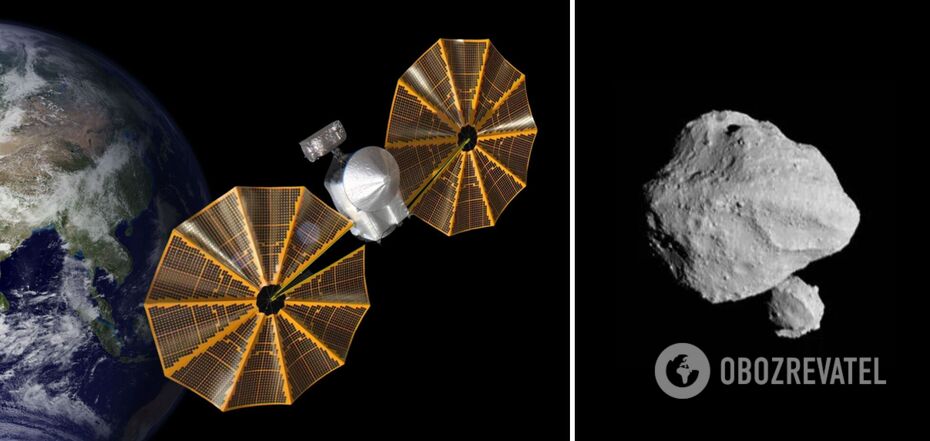News
NASA spacecraft stumbles upon a space surprise on its way to the Trojan asteroids. Photo
NASA's Lucy spacecraft, which is set to explore more asteroids than any other space mission before it, has made an early, unexpected discovery on its way to Jupiter. Flying past the asteroid Dinkinesh, the spacecraft discovered that it was not quite what scientists thought it was.
The Lucy mission was launched in 2021. For 12 years, it will study a group of asteroids known as Trojans. These objects orbit Jupiter around the Sun, but do not approach the gas giant.
On its way to Jupiter, the NASA spacecraft missed the asteroid Dinkinesh, which is located in the asteroid belt between the orbits of Mars and Jupiter, revealing that it is not a single asteroid 790 meters wide, but a system of two asteroids. A small 220-meter-wide satellite circles around the larger one.
The images released by NASA show the two objects rotating in space as Lucy flew past them at 16,000 km per hour.
The overflight of Dinkinesh was planned as an engineering test and the mission team was satisfied with its results. The purpose of this test was to see if the vehicle would be able to take clear images at high speed.
"This is a terrific series of images," said Lucy's guidance and navigation engineer Tom Kennedy, who works for Lockheed Martin.
It was this company that built the 16-meter spacecraft for the Lucy mission. The mission is being carried out from NASA's Goddard Space Flight Center, and a separate research team is working at the Southwest Research Institute in Colorado.
The resulting photos, as the engineer noted, showed that the tracking system is able to work as intended, "even when the universe presented us with a more difficult target than we expected."
The camera used to take the photos is called L'LORRI (short for Lucy Long Range Reconnaissance Imager). It is based on the design of the Hubble Space Telescope's lens and can capture light in the entire visible spectrum, making clear images of craters at a distance of 1,000 km. NASA describes L'LORRI's work as if you were standing at one end of a playing field and clearly seeing a fly at the other.
Lucy was 430 km away from the asteroid when Dinkinesh took the photo.
The next target of the NASA spacecraft in April 2025 will be an asteroid from the Donald Johanson belt. And in 2027, Lucy will start exploring the first Trojans.
Earlier, OBOZ.UA told about the idea of scientists that could make asteroids a salvation for the Earth and humanity.
Subscribe to OBOZ.UA channels in Telegram and Viber to keep up with the latest events.




























